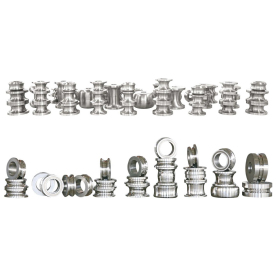****
In today’s fast-paced industrial landscape, efficiency, precision, and speed are critical factors that can determine the success of manufacturing operations. As technology continually evolves, the tools and machinery used in various industries must also progress to meet rising demands and standards. One such innovative tool that has gained considerable popularity is the flying saw machine. This article delves into the workings, advantages, and applications of the flying saw machine, showcasing its pivotal role in modern manufacturing, particularly in the woodworking sector.
What is a Flying Saw Machine?
A flying saw machine is an automated cutting device designed to perform high-speed, precise cutting on materials such as wood, metal, and plastic. Unlike traditional saws, which may require a stationary setup and manual operation, the flying saw integrates advanced technology, allowing for automated movements and adjustments. This machine often operates in conjunction with conveyor systems, where materials are fed in continuously, making it an ideal solution for high-volume production environments.
How Does It Work?

Revolutionizing Woodwork: The Impact and Advantages of Using a Flying Saw Machine in Modern Manufacturing Processes
The operation of a flying saw machine is relatively straightforward yet highly sophisticated. Material is loaded onto a conveyor belt that moves at a predetermined speed. A series of sensors and controllers work to monitor the position of the material in real-time. When the material reaches the appropriate cutting point, the flying saw, which is typically mounted on a set of rails or an overhead track, moves at high speed to make a precise cut.
The saw itself can be equipped with various types of blades, depending on the material being processed and the quality of cut desired. The speed and positioning are finely controlled, allowing the flying saw to adapt to different sizes and types of materials seamlessly.
Advantages of Flying Saw Machines

Revolutionizing Woodwork: The Impact and Advantages of Using a Flying Saw Machine in Modern Manufacturing Processes
1. **Increased Efficiency**: One of the most significant benefits of flying saw machines is their ability to operate at high speeds without sacrificing precision. This efficiency translates into shorter production times, enabling manufacturers to meet tight deadlines and increase output.
2. **High Precision Cutting**: The automation and advanced control systems in flying saw machines ensure that cuts are made with exceptional accuracy. This precision reduces wastage and lowers production costs, as manufacturers can utilize more of their raw materials.
3. **Flexibility**: Flying saw machines can easily be programmed to handle a variety of cutting tasks, accommodating different sizes and shapes. This versatility is invaluable for businesses that need to adapt to changing customer demands or seasonal trends in production.
4. **Reduced Labor Costs**: By automating the cutting process, flying saw machines require fewer operators, which leads to lower labor costs. Additionally, this automation reduces the risk of human error, leading to improved overall product quality.

Revolutionizing Woodwork: The Impact and Advantages of Using a Flying Saw Machine in Modern Manufacturing Processes
5. **Safety Features**: Many flying saw machines are equipped with advanced safety features, ensuring that operators are protected from accidents. With automated systems overseeing the cutting operations, the need for manual handling is minimized, reducing the chances of workplace injuries.
Applications in Modern Manufacturing
Flying saw machines are widely utilized across various industries, but they find their most significant applications in the woodworking sector. In furniture manufacturing, for example, they are used to cut timber into precise lengths for tables, chairs, and cabinets. Additionally, industries that produce wooden pallets, flooring, and decking materials also benefit greatly from the efficiency and precision offered by flying saw technology.
Moreover, flying saw machines are making inroads in metal and plastic fabrication industries. Their ability to cut different materials at high speeds is helping these sectors to innovate and streamline their production processes.
Conclusion
In conclusion, the flying saw machine epitomizes the modern advancements in manufacturing technology that facilitate higher productivity and superior quality. As businesses continuously seek to enhance their operational efficiency and competitiveness, the adoption of flying saw machines appears not just beneficial, but essential. With their ability to cut quickly, accurately, and safely, these machines are not just tools; they represent the future of manufacturing in the woodworking industry and beyond.Automatic Flying Saw Machine



